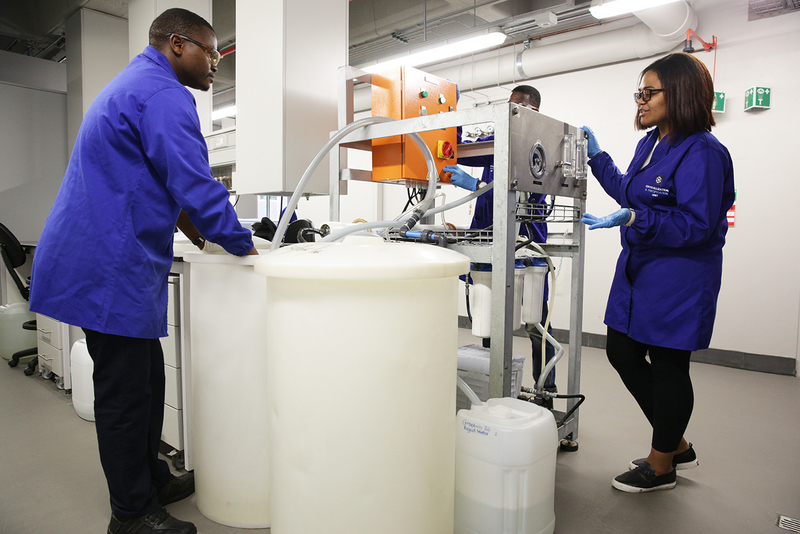Dual desalination could increase water yield
16 February 2018 | STORY HELEN SWINGLER PHOTO MICHAEL HAMMOND
Reverse osmosis followed by eutectic freeze crystallisation, a process used to treat mine waste water, could boost fresh water yields during seawater desalination, a final-year chemical engineering project has shown. However, the process is currently expensive and needs further research.
The project by final-year chemical engineering students Fendi Lin and Anthony McHendrie showed that by combining the two processes, 85.6% of the water trapped in the reverse osmosis retentate can be reclaimed. It also minimises waste.
The retentate is that part of the ‘feed’ that does not pass through the polymer membrane during reverse osmosis. It is a saline or briny solution containing dissolved ions rejected by the membrane.
The term eutectic refers to a mixture of substances that melts or freezes at a single temperature. When a briny solution is cooled to its eutectic temperature, the water in the mixture crystallises as ice, which floats, and the salts crystallise out as solids, which sink. This allows for the separate extraction of pure water and individual salts from the solution.
The students’ results showed that while reverse osmosis recovered 24% of the water from “salty” seawater, freeze crystallisation achieved 85.6% recovery from the retentate. When the two processes were combined they recovered 89.1% of the water, as well as salts.
The reason behind the research
The backdrop to McHendrie and Lin’s research is sketched in their report: “The availability of fresh water affects 40% of the world’s population. The water availability in South Africa is declining as the country faces one of the worst droughts for the past 30 years.
“Access to potable water is threatening Cape Town, in particular, as dams supplying the majority of the city with water have reached critically low levels. Therefore, it is important to recognise these issues and research ways in which to improve current situations.”
This is where the eutectic freeze crystallisation process comes into its own.
Two major problems facing South Africa are the declining availability of sufficient quantities of water and the deterioration of the quality of the available water.
The increasing use of water recycling has increased the generation of saline streams and inorganic brines. With eutectic freeze crystallisation, pure water and pure individual salts can be recovered without any effluent discharge from binary systems.
“More research should be conducted with larger crystallisers as well as using a continuous process, which has potential for treating huge volumes.”
But the “piggyback” process is expensive and needs more research before it can be considered to supplement Cape Town’s dwindling water reserves, the students report.
“More research should be conducted with larger crystallisers as well as using a continuous process, which has potential for treating huge volumes. Furthermore, analysis into the economic feasibility should be studied.”
Innovative technologies
The project's supervisors are Jemitias Chivavava, chief scientific officer of the Crystallisation and Precipitation Research Unit, and Professor Alison Lewis, dean of the Faculty of Engineering & the Built Environment and one of the unit's founding members.
The unit recently reported that the first full-scale working unit for eutectic freeze crystallisation treatment of waste water would soon be operational at the Tweefontein colliery in Mpumalanga.
In an earlier interview, Lewis said that cutting-edge technologies like eutectic freeze crystallisation have a great future.
“We need these kinds of innovative processes that offer multiple benefits, including eliminating waste ponds, the ability to treat hypersaline brines, the advantages of water recovery, salt recovery and potential revenue generation.”
 This work is licensed under a Creative Commons Attribution-NoDerivatives 4.0 International License.
This work is licensed under a Creative Commons Attribution-NoDerivatives 4.0 International License.
Please view the republishing articles page for more information.
Research & innovation





































